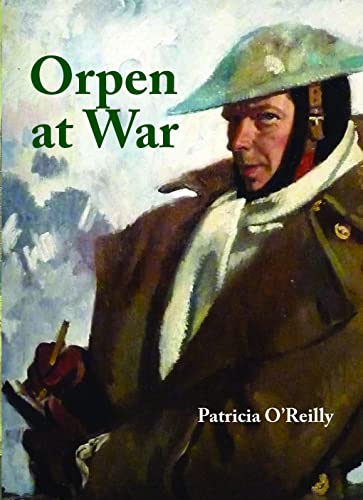Orpen at War
The author describes her work as “soft fiction based on hard fact,” a blurring of genres enhanced by the copious illustrations throughout in this novel-as-art-book.
It tells the story of the Irish artist William Orpen (1878-1931), by the outbreak of World War I a highly successful portrait painter, who chose to be a war artist when he could have gone back to Ireland where there was no conscription; the privations experienced in the trenches undermined his already not very robust health.
Whilst Orpen’s reputation faded after his death, his stock has risen since; the near £2 million paid for the portrait Gardenia St George with a Riding Crop in 2001 makes it the most expensive Irish painting ever sold at auction. He was an exceptional draughtsman and stylistically versatile: his depictions of society figures are comparable to Sargent’s “swagger” portraits, his interiors sometimes echo Manet’s, and a portrait of his wife Grace at Howth recalls the work of his teacher Philip Wilson Steer.
Pleasingly, in O’Reilly’s meticulously researched book just about every painting that is referenced in the text is illustrated nearby. Most moving are his studies of individual soldiers, each one rendered as a unique human being, a humanisation of those endless published lists of the fallen. These soldiers tell Orpen their stories—or choose not to—and he is anguished at the subsequent deaths of a number of his sitters. Chronological order is eschewed in favour of thematic flashback, interweaving Orpen’s wartime experiences with his relationships with three women in particular: his wife Grace, his long-term mistress, the handsome and imperious Evelyn St George and his French lover Yvonne Aupicq, ultimately passed on by Orpen to his own chauffeur.
O’Reilly has written a compassionate and closely-observed portrait of a talented artist and a flawed human being, that succeeds both as a novel and as a work of art history.










